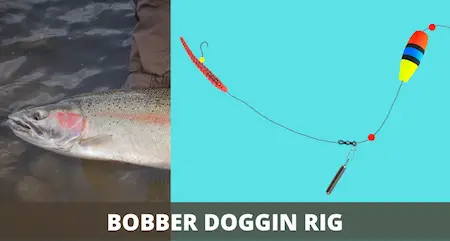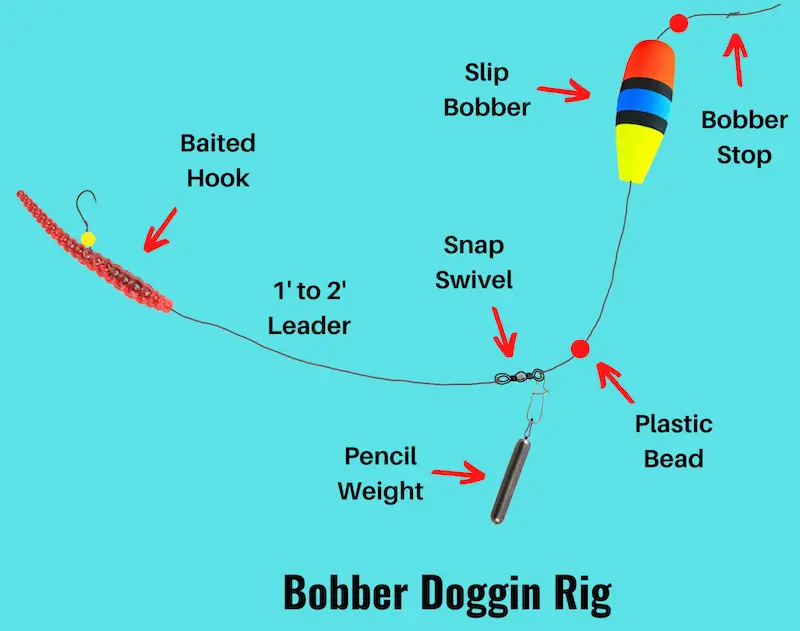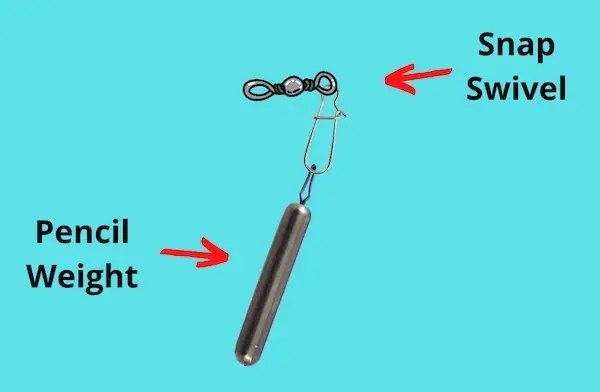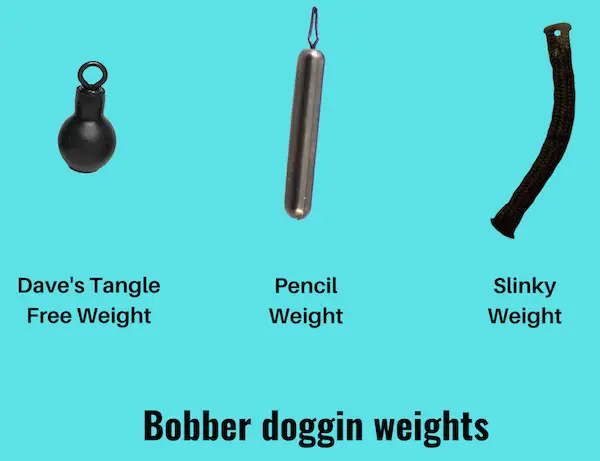Bobber Doggin Rig (Setup and How-to Guide With Pictures)
PUBLISHED 03 NOVEMBER 2023
by Robert Ceran
Are you planning to use a bobber doggin rig to drift fish for steelhead or salmon?
This setup is one of the most effective steelhead rigs available to anglers, and combines the key strengths of a slip bobber rig with a traditional steelhead worm rig.
In this article I’ll cover the steps of setting up a bobber doggin rig, how to use it to catch steelhead, and the key advantages it provides compared to classical drift fishing.

What is bobber doggin?
Bobber doggin is a type of drift fishing that takes advantage of a river’s current to pull a float downstream, which in turn drags a weight and baited hook along the bottom of the river.
The secret why this setup is so deadly for steelhead is due to the fact that it combines a bobber setup with a bottom fishing setup, and is more effective than either setup used on their own.
This setup is most often used for steelhead fishing, but also works well for river salmon and trout, and can be used from either a boat or the river bank.
How to set up a bobber doggin rig

You’ll need the following tackle components to set up this rig:
- Spinning rod (8 to 9 feet long)
- Spinning reel spooled with 28 lb test braided line
- Fluorocarbon leader (10 to 12 lb test)
- Float (either fixed or sliding)
- Bobber stop
- #6 to #4 Octopus hook
While the best float to use for this setup is generally a slip bobber, you can also use a fixed bobber setup if you’re fishing in shallow water under 8 feet. However, for water that’s deeper than the length of your rod, you’ll need a sliding float rig.
How to tie it: Setting up this rig is a little more complicated than most other bobber fishing rigs, but it’s worth investing the effort since doing it right will give you some of the best steelhead action you can get.

The upper part of the rig is very similar to a basic slip bobber setup, with the one difference that you need to thread a plastic bead both above and below the slip float. After threading on the bead underneath the bobber, tie the mainline to the eye of a snap swivel with the snap on it (as shown in the picture above).
You can use the snap to attach a pencil weight, and this makes it easy to exchange the weight if you notice that you need a different size weight.
Next, tie a 1 to 2 foot fluorocarbon leader to the other side of the snap swivel, and then tie your Octopus hook to the end of the leader. It’s better not to use monofilament for the leader, since mono floats in the water, while fluoro doesn’t.
What weights should you use for bobber doggin?
It’s best to use pencil weights or bell sinkers that weigh between 1/4 and 1/2 oz.

I like to use Dave’s Tangle Free Stick Weights, but you can basically use any no-snag sinkers that are designed for dragging along the bottom.
I’ve also used Slinky Weights successfully for this purpose, and you may want to experiment with several different types of weights to see which design generates the fewest snags in the river that you’re fishing.
How to fish a bobber doggin rig
Before you cast out your rig, make sure that you set the depth of the float to roughly 1.5 times the depth of the river that you want to fish.
It’s essential to get this right, since that will allow the bobber to lean downstream with the current, and drag the weight and terminal rig along the bottom of the river.
If you cast out your rig, and see the float standing up straight in the water, that means it’s set too shallow, and you need to set it deeper. If on the other hand, the float lies flat on the water, that means it’s set too deep, and you need to set it more shallow.
If you do this right, it means that your bait will be presented right above the bottom, which is exactly where steelhead and other salmonids like to feed. Using bobbers also helps to avoid snags, as it keeps a straight line pointing up from the weight as it gets pulled along the bottom.
Cast your rig into areas of the river where steelhead are feeding, and let it drift downstream with the current.
The bobber also serves as a bite indicator, and if a fish bites, the float disappears down into the water. If you see this happening, tack up the slack line as fast as possible and set the hook.
The beauty of this setup is that you can use it either from an anchored boat, or from the river bank. However, you need a current that’s strong enough to pull this rig downstream, and so it works best in medium to big rivers that have a powerful current.
Bobber doggin vs drift fishing
To be perfectly clear: bobber doggin is a style of drift fishing. However, while traditional drift fishing is done with either a bottom fishing rig or float fishing rig, the bobber doggin setup combines both of these into one.
And while you can definitely use either setup to catch steelhead with drift fishing, the bobber doggin rig has the advantage of generating fewer hang ups on the bottom, since the float makes it easier to mend your line.
Frequent hang ups are especially problematic when sidedrifting from the bank, as the line between your rod tip and the weight forms a “belly” that can get snagged on rocks, and adding a float solves this problem.
Finally, using this setup also ensures that your bait drifts at the same speed as the current, while side drifting causes your bait to speed up towards the end of a drift, as your line gets pushed in towards the bank.
What’s the difference between bobber dogging and float fishing?
While a traditional bobber fishing rig presents your baited hook suspended somewhere in the water column, a bobber doggin setup drags your weight and baited hook right along the bottom.
The key advantage of the latter is that this is the prime strike zone for steelhead, and that you’re more likely to get bites by presenting your bait at this depth.
